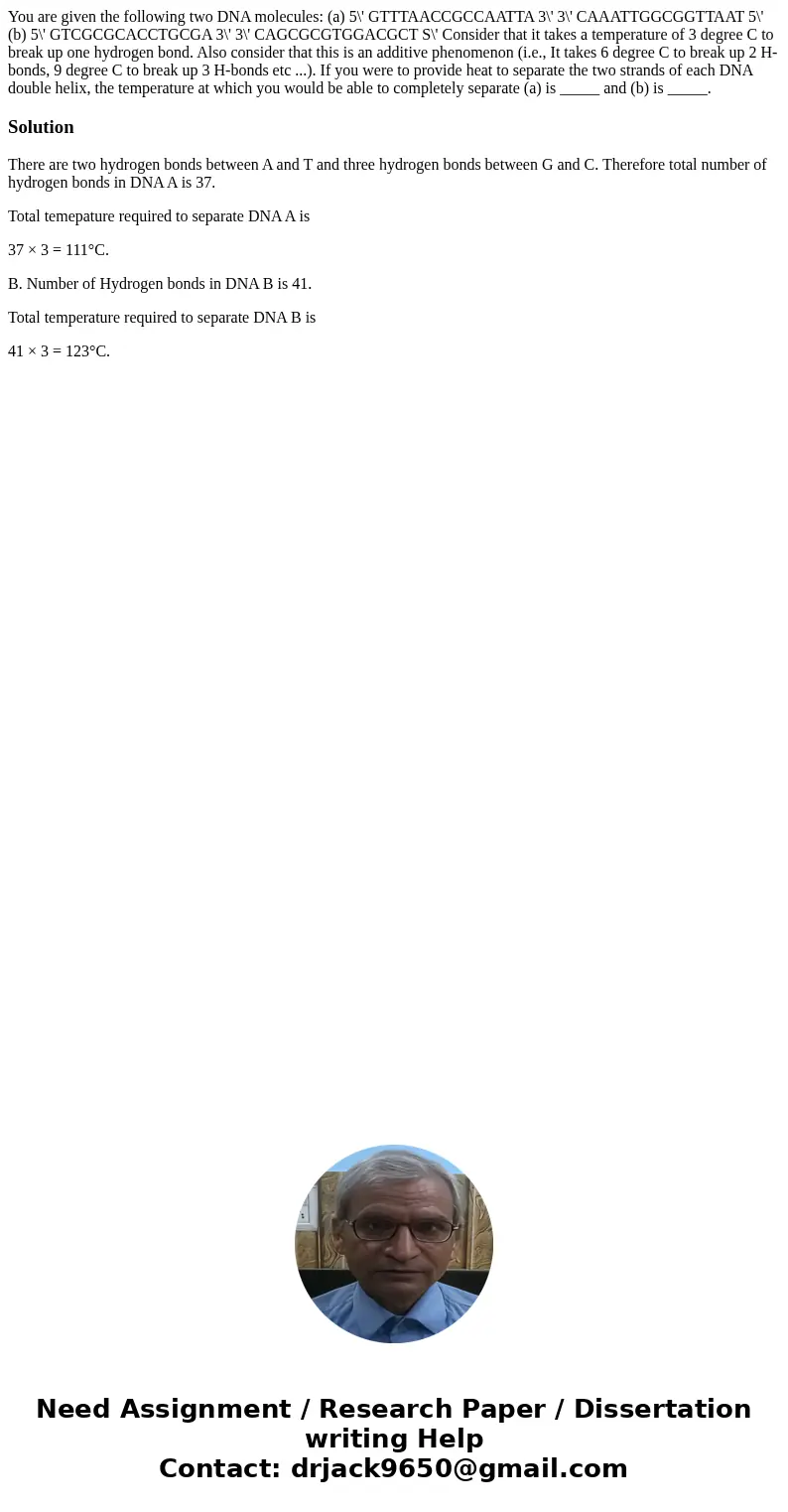You are given the following two DNA molecules a 5 GTTTAACCGC
You are given the following two DNA molecules: (a) 5\' GTTTAACCGCCAATTA 3\' 3\' CAAATTGGCGGTTAAT 5\' (b) 5\' GTCGCGCACCTGCGA 3\' 3\' CAGCGCGTGGACGCT S\' Consider that it takes a temperature of 3 degree C to break up one hydrogen bond. Also consider that this is an additive phenomenon (i.e., It takes 6 degree C to break up 2 H-bonds, 9 degree C to break up 3 H-bonds etc ...). If you were to provide heat to separate the two strands of each DNA double helix, the temperature at which you would be able to completely separate (a) is _____ and (b) is _____. 
Solution
There are two hydrogen bonds between A and T and three hydrogen bonds between G and C. Therefore total number of hydrogen bonds in DNA A is 37.
Total temepature required to separate DNA A is
37 × 3 = 111°C.
B. Number of Hydrogen bonds in DNA B is 41.
Total temperature required to separate DNA B is
41 × 3 = 123°C.

 Homework Sourse
Homework Sourse